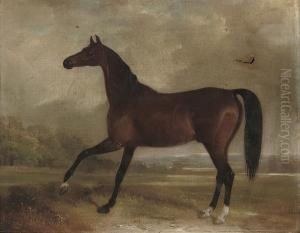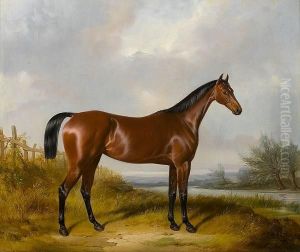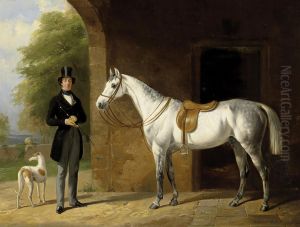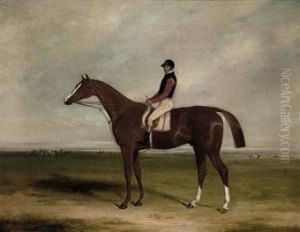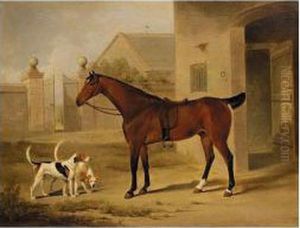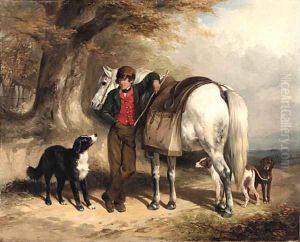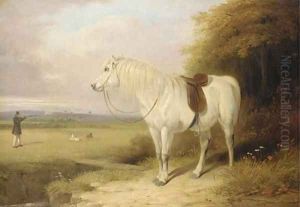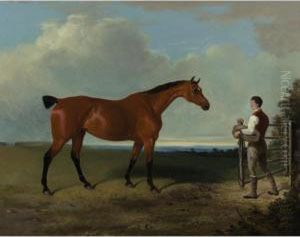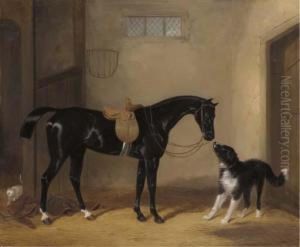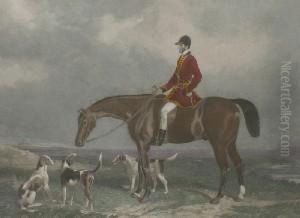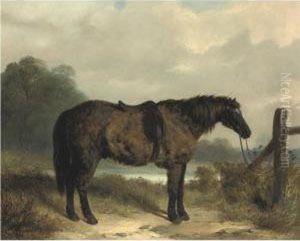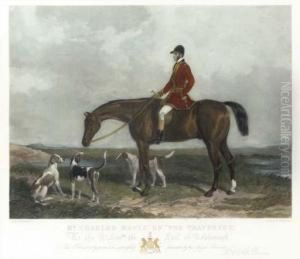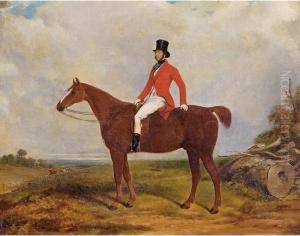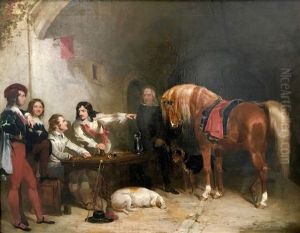William Barraud Paintings
William Barraud was a 19th-century British painter known for his animal paintings and sporting scenes. Born in 1810 in Lambeth, a district of London, he was one of the two artist brothers; his brother Henry Barraud was also a noted painter. Together, they collaborated on a number of works, often combining their skills to create detailed and lifelike depictions of horses and dogs, which were highly popular subjects during the Victorian era.
William was apprenticed to a heraldic artist, which gave him a firm grounding in the precise and meticulous depiction of animals. He later studied at the Royal Academy, which further honed his artistic skills. His works were exhibited at the Royal Academy and the British Institution, which were leading art institutions in London at the time.
Barraud's paintings often included portraits of specific sporting and racehorses, working dogs, and hunting scenes. These works were celebrated for their accuracy and attention to anatomical detail. His ability to capture the character and essence of the animals he painted made his work sought after by the aristocracy and gentry, who were his primary patrons.
As an artist, William Barraud did not enjoy a long career; his life was cut short when he died in 1850 at the age of 40. Despite his relatively brief career, his work had a significant impact on English animal painting, and his paintings are still appreciated today for their craftsmanship and portrayal of the sporting life of his times.
His death marked the end of his collaboration with his brother Henry, who continued to paint and also created several memorials to William's work. Today, William Barraud's paintings can be found in art galleries and private collections, and they continue to be of interest to collectors of fine animal and sporting art.



